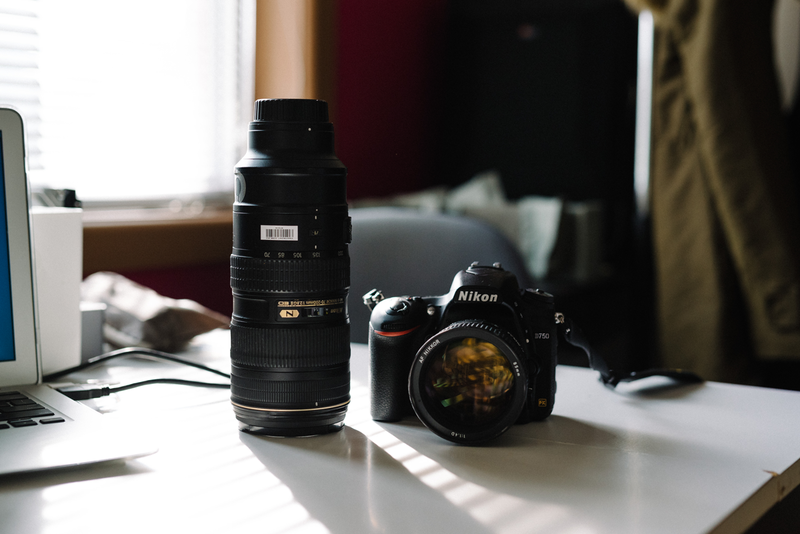The biggest difficulty in photography is to represent colors naturally, because cameras do not see colors in the same way as our eyes, the truth is that DSLR cameras are very limited in this aspect, although they represent the largest share of the technological market for professionals. Photography.
On the other hand, if you don’t want bad images or don’t look too artificial, you should be very careful when capturing the colors of the scene, so we’ve separated some tips on it that can help improve results in your digital photography.
- The first thing to consider is the color temperature.
- This element varies by light source and is represented on the Kelvin scale (k).
- Since your main goal is to be able to reproduce the colors in the same way that the human eye sees them.
- Its DSLR camera should be able to interpret the color temperature.
Generally, lower color temperatures look orange, while the higher ones, in turn, reflect more bluish colors, both easily perceived in your photos.
On a sunny day, for example, the sunlight is white with a color temperature of approximately 5500k, the shadows of this sunny day will be bluish, because the color temperature is approximately 8000k.
Another example that could make the color temperature more convenient is the comparison of the light emitted by the lamps, the same one you have at home, which usually tend to appear yellowish in photos and have an average color temperature of 2400k. However, the camera flashes emit a bluer light with a color temperature of 6000k.
One of the most convenient ways to capture light in the most natural way possible and replicate the same effect as our eyes is to use white balance on your DSLR camera. Most of these professional cameras have automatic white balance modes that work perfectly for all types. photography.
However, when automatic, also called AWB on some DSLR camera models, is not possible, the photographer can apply small touches to help improve the results of their photos.
Pay special attention to capturing photos in JPEG format, as in this case it will be very difficult to artificially change the color temperature in post-processing, so setting the white balance of your DSLR camera should be perfect for capturing images as best as possible. Quality.
What happens when you capture images in RAW format? Well, while you can change the color temperature in this format in any image editing software, it would be very interesting to take extra effort to better adjust the white balance to avoid extra work, wouldn’t it?No?
But how do you correctly adjust the white balance of your camera ?, this is a very relevant question, especially considering that all photographers are exposed to different lighting sources and color temperatures, situations that contribute to the complete knowledge of the functions of the professional’s photographic equipment. .
The safest way to correctly adjust the white balance on your DSLR camera can be summarized in: view the live photo result of your computer. Most professional cameras have this feature and seeing the result instantly is the best way to identify color. adjust the white balance according to your needs.
Let’s say you capture images inside a room, the normal team bulb would return a more yellowish tone in your photos, which means a low color temperature, remember?
Then you will get better results by adjusting the white balance of your DSLR camera to tungsten, usually represented by a lamp icon, instead of automatic mode as usual.
The golden advice is to test your DSLR camera on different types of lighting and light sources, so you can identify the best settings for your equipment under different conditions. If in doubt, you can also refer to your camera manual for details on white balance.
For decades, Kodak gray cards have been the most common way to get the most accurate white balance from your DSLR camera.
Professional photographers have been using gray cards for years and get fantastic results with them. You can buy these cards in different sizes, these are tools to use when you want to get the perfect color temperature.
A gray card is placed in front of the DSLR camera photometer, reflecting the light falling on the stage. You measure the light on it, but remember that the card has a reflectance of 18% and that the card gives you the right light to adjust the color temperature in the right place.
The gray card works, but if the map isn’t at exactly the same angle as the object to capture, you may not get the best results. In addition, grey cards tend to be damaged with prolonged use, especially if you take them anywhere. in your bag or photo kit.
For those who don’t want to buy a gray card, they can achieve the same effect using a blank sheet, a simple paper jump in front of the camera, in this case you will help your camera identify the perfect target for your photos. However, small changes and variations can still occur and the live view of the camera is the best way to monitor and adjust the result of the final image.
Now that our tips on how to reproduce colors naturally with your DSLR camera are over, we’d love to hear your opinion on this article and, who knows, your own balconies for more efficient white balance in photography. Down!

